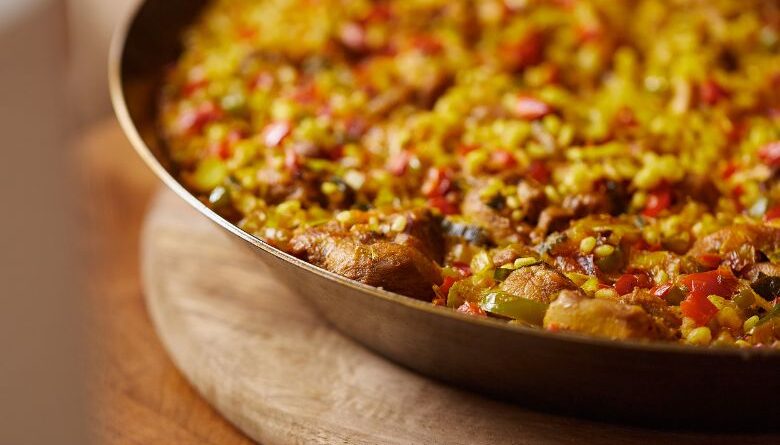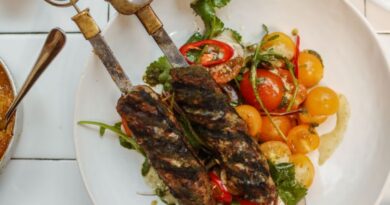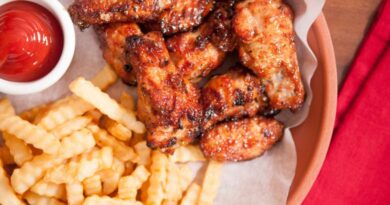Sausage Paella: Flavorful Spanish Delight
Sausage Paella: Flavorful Spanish Delight
Sausage Paella, a beloved dish from the land of Spain, is a culinary marvel that has won the hearts of food enthusiasts worldwide. This iconic Spanish delight offers a delectable combination of flavors and aromas that tickle the taste buds and transport diners to the vibrant streets of Valencia. In this article, we will explore the origins, ingredients, cooking process, variations, and everything you need to know about this delightful Spanish dish.
2. What is Sausage Paella?
Sausage Paella, also known as “Paella de Chorizo,” is a traditional Spanish rice dish originating from the region of Valencia. It is a hearty one-pan meal that combines sausages, rice, vegetables, and a medley of spices, creating a burst of flavors that delight the palate. The name “Paella” comes from the wide, shallow pan used to prepare the dish, which is also known as a “paellera.”
3. The Origins of Paella
The roots of Paella can be traced back to the 18th century when it was originally a humble farmer’s dish cooked over an open fire in the fields of Valencia. The early versions of Paella often featured rabbits, snails, and various beans as the main ingredients. As the dish gained popularity, it evolved to include a variety of proteins, with the most common being seafood, chicken, and sausage.
4. Ingredients Used in Sausage Paella
– Rice Varieties
Traditionally, short-grain rice such as “Bomba” or “Calasparra” rice is used for preparing Paella. These rice varieties have excellent absorption capabilities, allowing them to soak up the flavors of the other ingredients while maintaining a firm texture.
– Sausage Selection
The key component that lends its unique flavor to Sausage Paella is, of course, the sausage. Spanish chorizo, a smoked and cured sausage made from pork and seasoned with paprika, garlic, and other spices, is the preferred choice. Its rich and slightly spicy taste adds depth to the dish.
– Vegetables and Seasonings
Onions, bell peppers, garlic, tomatoes, and saffron are common vegetables and seasonings used to enhance the flavors of Sausage Paella. Saffron, in particular, infuses the rice with a warm golden hue and imparts a distinctive aroma.
5. Cooking Sausage Paella Step by Step
– Preparing the Ingredients
Before diving into the cooking process, it’s essential to have all the ingredients prepped and ready. This includes slicing the sausages, chopping the vegetables, and measuring the rice and broth.
– Sautéing the Sausages and Vegetables
The first step in cooking Sausage Paella is to sauté the sliced sausages and vegetables in olive oil until they are lightly browned and tender.
– Adding the Rice and Broth
Once the sausages and vegetables are cooked, add the rice and stir it until it is well-coated with the flavorful oils. Then, add the broth and saffron, allowing the rice to absorb the liquid.
– Cooking and Simmering
Let the Paella simmer over medium heat until the rice is cooked to perfection and a delectable crust forms at the bottom, known as the “socarrat.”
6. The Flavorful Spanish Delight: Taste and Aromas
Sausage Paella is a harmonious symphony of flavors and aromas that tantalize the senses. The combination of smoky chorizo, tender rice, and the fragrance of saffron creates a truly mouthwatering experience.
7. Sausage Paella Variations and Regional Influences
Over time, various regions in Spain have put their own twist on Paella, resulting in different variations of the dish. Some popular versions include:
– Seafood Paella
This variation substitutes sausages with an assortment of fresh seafood, such as shrimp, clams, mussels, and squid.
– Vegetable Paella
For vegetarian delight, vegetables like artichokes, green beans, and peas take center stage in this vibrant version.
– Mixed Paella
Combining both meat and seafood, mixed Paella caters to diverse palates and showcases the best of both worlds.
– Valencian Paella
The original and most authentic version, Valencian Paella, adheres to the traditional recipe, featuring rabbit, chicken, snails, and saffron.
8. Tips for the Perfect Sausage Paella
– Choosing the Right Pan
To achieve the characteristic socarrat, it’s crucial to use a wide, shallow pan that allows the rice to cook evenly.
– Controlling Heat and Cooking Time
Adjusting the heat during the cooking process is essential to prevent the rice from becoming mushy or overcooked.
– The Socarrat – Crispy Bottom Layer
The prized socarrat adds a delightful crunch to the dish and is a sign of a well-prepared Paella.
– Resting Period
Allowing the Paella to rest for a few minutes before serving ensures that the flavors meld together perfectly.
9. Pairing Sausage Paella with Wines and Beverages
Pairing Sausage Paella with the right wine or beverage can elevate the dining experience. A refreshing sangria or a dry Spanish red wine complements the dish’s bold flavors excellently.
10. Serving and Presentation
Sausage Paella is traditionally served in the pan itself, promoting a convivial atmosphere where diners can help themselves to the dish. Garnishing with fresh herbs and lemon wedges adds a touch of elegance.
11. Sausage Paella: A Culinary Experience Worth Trying
Sausage Paella is not just a dish; it is an experience that celebrates the essence of Spanish culture and cuisine. With its robust flavors and inviting aroma, this dish has earned its place as a favorite in both Spanish households and global food scenes.
12. Conclusion
In conclusion, Sausage Paella is a culinary masterpiece that captures the heart and soul of Spain. From its humble origins in Valencia to its numerous variations across the country, this dish continues to entice and delight food enthusiasts worldwide. Whether you’re a seasoned chef or a cooking novice, exploring the world of Sausage Paella is an adventure worth embarking on.
13. FAQs
Q1: Can I use different types of sausages for Sausage Paella?
Absolutely! While Spanish chorizo is the traditional choice, you can experiment with other sausages to tailor the dish to your preferences.
Q2: Is Sausage Paella spicy?
The level of spiciness can vary based on the type of sausage used. Spanish chorizo tends to have mild to moderate spiciness, but you can adjust it to suit your taste.
Q3: Can I make a vegetarian version of Sausage Paella?
Certainly! Vegetable Paella is a delicious option for vegetarians, and you can get creative with a variety of veggies.
Q4: What is the best rice to use for Sausage Paella?
For an authentic experience, use short-grain rice like Bomba or Calasparra, which absorbs the flavors and maintains its texture.
Q5: Can I freeze leftover Sausage Paella?
While it’s best enjoyed fresh, you can freeze the leftovers in an airtight container for up to 2-3 months. Reheat on the stovetop or in the oven before serving.





Pingback: Blueberry Muffins: Bursting with Flavor | UTHSI 2023